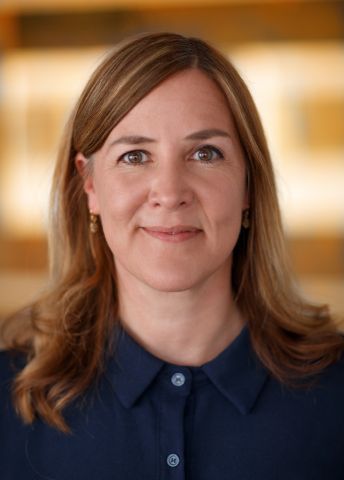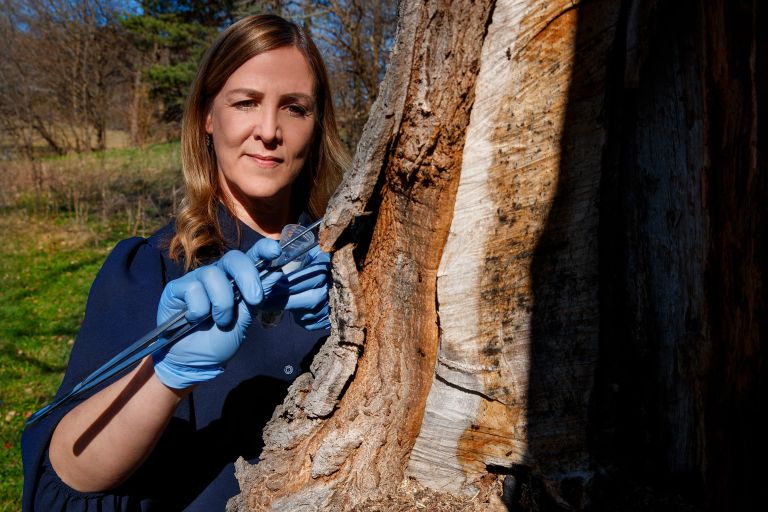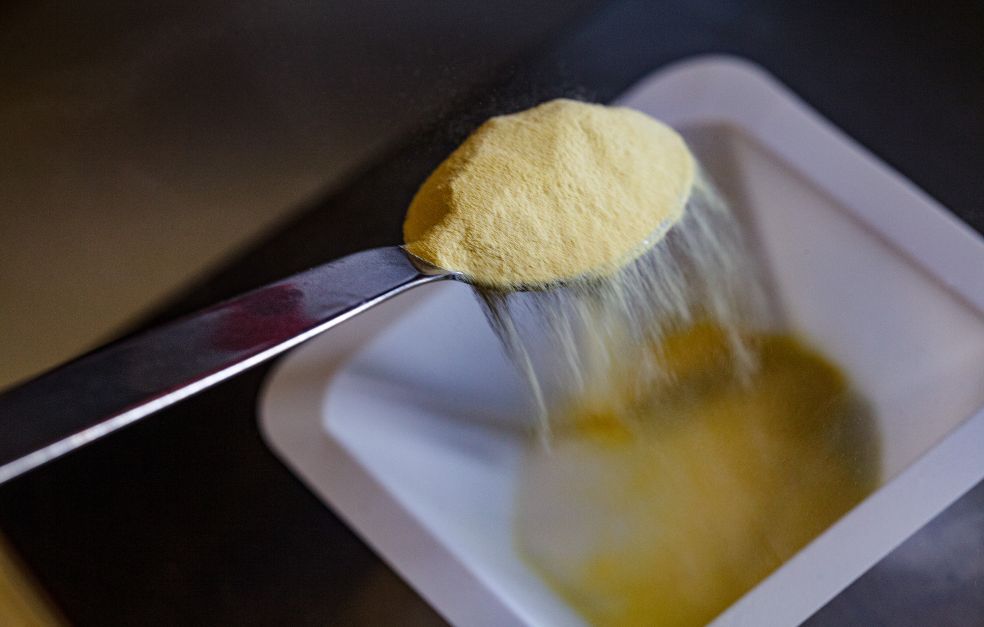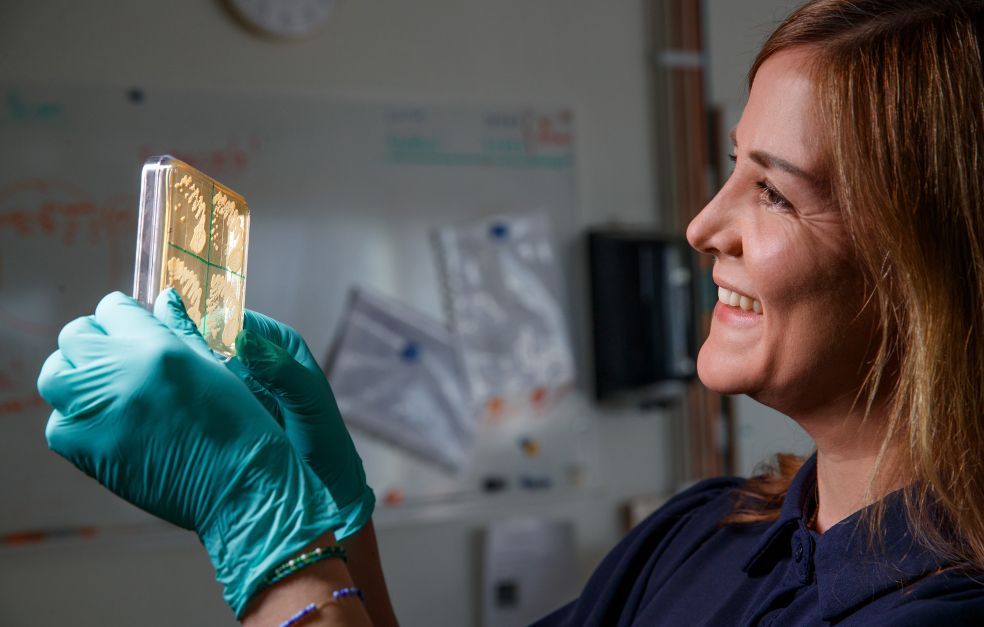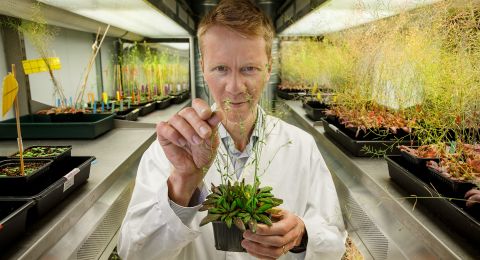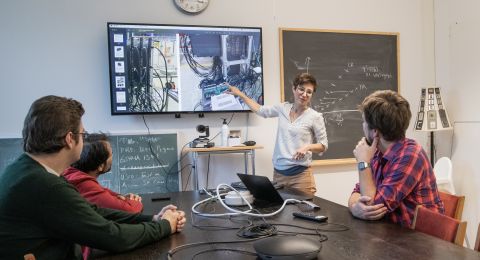Wild yeasts live in the forests all around us. Yet, little is known about the role they play in ecosystems. They can be used to develop new beer and bread flavors, but wild yeast can also serve as a unique model for studying climate change.
Rike Stelkens
PhD in Evolutionary Biology
Wallenberg Academy Fellow, grant extended 2024
Institution:
Stockholm University
Research field:
Evolutionary biology focusing on yeast genetics, hybridization, environmental change and climate
When Rike Stelkens explains her research, she sometimes brings out a piece of old bark. She collected the bark from an ancient oak tree near her home in Åkersberga, north of Stockholm. The bark hosts an entire micro-world of wild yeast.
“For thousands of years, humans have inadvertently brought yeast from nature into their homes. They baked bread, brewed beer, and made wine with the help of microorganisms invisible to the naked eye,” she explains.
Stelkens is a researcher at Stockholm University and a Wallenberg Academy Fellow. Her research revolves around yeast in all its wild forms. Yeast is not just the powder you buy in the grocery store to bake buns. Wild varieties exist throughout nature, and they sometimes have exciting properties.
Stelkens has spent several years researching hybridization – how crosses between different yeast species can produce new strains with unexpected capabilities. Now, she also wants to use yeast to better understand climate change.
“The idea is to use yeast as a model for climate research,” she says.
Global Collection
Stelkens collects wild yeast from different parts of the world. Her aim is to understand how microorganisms respond to temperature changes and whether adaptations are similar from one place to another.
Her group studies wild yeast from environments ranging from the cool and wet forests in northern Sweden to warm and dry regions in South America and Europe. Her aim is to determine whether evolution takes the same direction or varies, depending on species and geography.
If yeasts adapt by making the same genetic changes, this indicates parallel evolution. If they use entirely different solutions, it suggests that evolution can take multiple paths.
“We want to study patterns to identify similarities and differences, as well as the evolutionary potential of wild yeasts. This is important to predict if populations can adapt to the challenges of future climate change.”
Crystal ball
One approach the researchers are using is called experimental evolution. The advantage of using yeast as a model is that it provides a window into the future.
Yeast populations can be cultured in the laboratory over hundreds of generations in a short time while gradually increasing the temperature.
“Instead of looking back and studying extinct species in fossils, we can observe in the lab how yeast evolves in real time as we turn up the temperature. This allows us to examine what happens to their genes and how they survive or go extinct as it gets warmer,” Stelkens explains.
The project includes ecosystems that are relatively little explored. One example is Chile, with its elongated geography and unique forests. These environments resemble those in Europe but feature different species and climatic conditions.
It’s fantastic to work with researchers in Chile. We gain a global perspective, and it also strengthens interest in preserving forests and ecosystems that otherwise might not receive much attention.
The researchers are also comparing ecosystems to generate new knowledge about biodiversity.
Risk of disease
Part of the research is aimed at gaining insights into risks of new diseases. With rising global temperatures, some scientists suspect that more microorganisms will adapt to heat, making them better suited to survive inside animal hosts.
Most yeast strains are completely harmless, but some can become pathogenic, particularly when infecting hosts that are already ill or have weakened immune systems.
Stelkens and her colleagues are studying this by injecting yeast into larvae. If the larvae die quickly, it indicates higher pathogenicity. The yeast’s genes are then analyzed to understand the changes required for the yeast to cause an infection. Mathematicians at Stockholm University assist in analyzing the vast amounts of data.
Wild yeast for beer and bread
Yeast research also has exciting industrial applications. Recently, Stelkens’ laboratory crossed a wild yeast from Chile with a common commercial beer yeast. The result was a new yeast strain for lager beer brewing with a distinctive flavor. A joint project with the brewery Nils Oscar and Jästbolaget has begun. The collaboration has also attracted international attention.
“Suddenly, major newspapers and TV channels contacted us. They find it fascinating that a yeast from a forest in Patagonia can be used to impart new flavors to beer.”
In the future, it might be possible to develop more custom yeast strains for bakeries and breweries.
“I never thought I would work on something so practical. But it’s fantastic to see how our fundamental research can be relevant to both industry and the environment,” says Stelkens.
Although she spends most of her time at the computer and in the lab, she still enjoys occasional trips to the forest. She and her colleagues collect samples, cultivate yeast, and see what they find.
It is important to Stelkens that her research creates new opportunities. Perhaps one day, that little piece of bark will inspire new types of beer – or help researchers worldwide learn more about how we can help protect our biodiversity in a warmer climate.
Text Nils Johan Tjärnlund
Translation Maxwell Arding
Photo Magnus Bergström
